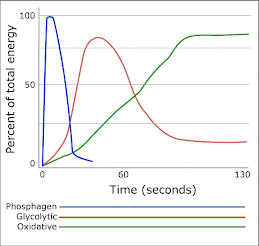Last blog we talked about the FITT principle. Of the four elements of the FITT principle, intensity is the most often overlooked and in my somewhat expert opinion the most important. We know intensity means how hard you are working out, but how do we measure that? We are going to experiment with a method called RPE or Rate of Perceived Exertion.
RPE may be the most versatile method to measure exercise intensity for all age groups. This rating relies on how hard you feel you’re exerting yourself during exercise.
The scale rates how you feel (both physically and mentally) as it relates to the intensity level. The scale ranges from 1 to 10, with the recommended RPE of 5-7 for most adult workouts. This means that at the height of your workout, you should feel you are working “somewhat hard”, nearing “hard”. Using the RPE works well because it is individualized based on your current fitness level and overall perception of exercise.
1 Rest
2 Very light
3 Light
4 Fairly light
5 Somewhat hard
6
7 Hard (heavy)
8
8.5 Very hard
9
9.5 Extremely hard
10 Maximal exertion
For your blog this week I want you to think about some of the drawbacks to using this method of measuring intensity in a workout. List one of the drawbacks in your response and explain your reasoning.
Great SEO Advice for CrossFit Gyms
4 years ago

17 comments:
One drawback of the RPE method is that you can think you are doing maximum exertion when you are only at heavy, this may hapen because you want to see that you are getting some where in your exercise.
Hassaan Yousufi
You may think that u r working harder than you really are.
Max Arifin
Hey Mr. Kirk.
the RPE method has a "drawback." The scale is probably different for everybody because some people are very athletic and can really get high in the intesity level...
However..others might be really pushing themselves, but just not reaching the same level (especially to the person, mentally.) So, i think that whatever the person believs is what they have. They don't need a scale to know how much more intense they have to get.
-Angela Yang
A drawback of this method is that it does not take into account for how long the force of exertion lasts and over what time period. A person who might be working on a level 9 intensity might only be doing so for 5 minutes, while another person working on a level 7 intensity might be working on that level for 30 minutes, and the latter would be getting a better workout.
It is different for different people. For example, one person may give a 9.5, but to another person, it may be a 5
A drawback of the RPE method is, different people have different thoughts of how had they're working during a workout. Some people think that not so much work is hard while other people do a lot of work and find it difficult.
-Ryan McLean
1 drawback is that the levels arent specific enough
for example i probably wont ever get to 10
so i will mainly work out at around the lighter levels... but since there are only 4 divisions in the lighter level part, its kind of too broad to measure how hard im working
-jing xiao
I think one drawback is that how intense something is for one person might be really easy for another.
-koroush
the drawback of that method is that everyone is different. If two people were doing the same workout but one guy was stronger and more fit he would find it easier than the other person. even though they did the same work...that guy found it easier thats why you cant scale how hard the workout is very well with this method.
crap i forgot my name ill just do it again... the drawback of the scale is that when two people do the same workout..and one guy is fitter and stronger the workout will be easier for him. therefore the scale is not good because not everyone is at the same fittness level.
-Chris khokhar
A drawback is that the categories are all relatively close to each other, and it is difficult to pinpoint a specific number.
-Lydia Chou
A drawback of the RPE method is that some people might think that they are working harder than they really are (it's all in perception).
William Berganza
One drawback in the RPE method is that the levels can be different intensities for people. For example, someone who is really fit can probably reach a 10 easier and probably stay there longer than someone who doesn't work out often.
-Keera G.
some people think they're better or worse that what they really are and peoplemay think the maxium exertion until later.
The drawback is that you think you are working hard...but actually you could be only working somewhat hard.
Sami Krug
You might be working really hard but you arent getting as much out of it
Jeffrey Snyder
One drawback in the RPE method is that the levels can be different intensities for people. For example, someone who is really fit can probably reach a 10 easier and probably stay there longer than someone who doesn't work out often.
~ stephi Nordlander
haha sorry im REAALLY late
Post a Comment